Leopard Geckos are an excellent beginner reptile.
These lizards are easy to care for, have a simple diet, and can live for a long time. The oldest leopard gecko was a male who lived to be 28 years old!
Depending on their gender, breeding, and care, most pet Leopard Geckos can live for 20 years.
Want to know how long leopard geckos live? How old your Leo is? Or, what you can do to maximize their lifespan? Continue reading to find out…
Leopard Gecko Lifespan
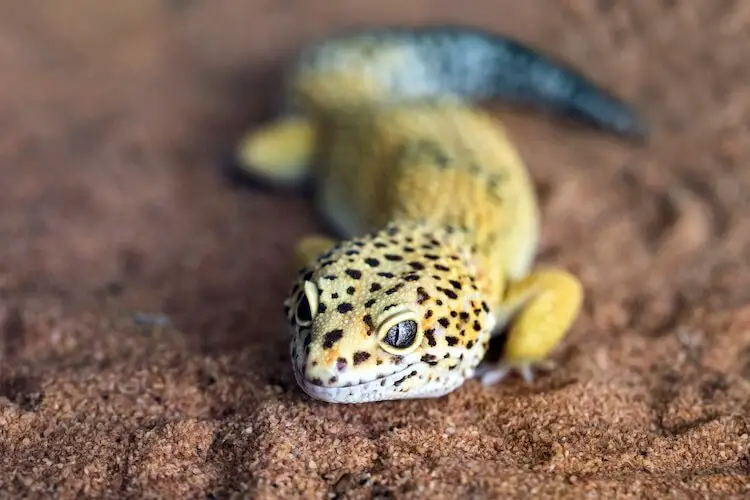
The lifespan of a leopard gecko is between 10 and 20 years. These hardy lizards outlive many other popular pet reptiles like bearded dragons and corn snakes.
With good care and routine husbandry, 20 years is considered to be the maximum lifespan for most pet geckos. This means that if you buy a hatchling as a teenager, you may still have it in your thirties. Because of this, buying one is a long-term commitment!
The average lifespan of a Leopard Gecko is 15 years old. But, this is different for males and females:
| Gender | Lifespan (years) |
|---|---|
| Male | 15 – 20 years |
| Female | 10 – 15 years |
The life expectancy of each gender is found by calculating the average lifespan of many individual leopard geckos. There is a large overlap in the lifespan of male and female Leopard Geckos. It is not rare for females to live longer than some males. Likewise, males may live shorter lives than some females.
Male leopard geckos live longer than females. Normally a male will live for between 15 to 20 years.
If you are lucky, your male may live to be older than 20 years old. This is rare but not unheard of.
The oldest gecko in captivity, who lived to be 28 years old, was male! However, buying a male does not guarantee that he will live longer than a female. He just has a slightly higher probability.
Females have a shorter lifespan of 10 to 15 years. They do not live as long as males because of reproduction. Reproduction is hard for females as developing eggs is very energy intensive. Females that are not bred are likely to live longer because they do not have to put energy in to laying eggs.
Diet, size, genetics and husbandry also affect how long your Leopard Gecko will live.
Pet leopard geckos that have an excellent level of care from hatching to adulthood will live the longest. This is one of the reasons it is so important to find a good breeder.
The care a gecko receives in their juvenile phase also has a big impact on their health and lifespan. It is a good idea to know how to properly take care of your gecko before buying. If you are not sure, then read our Leopard Gecko care guide.
Despite a Leopard Gecko’s long lifespan they grow very fast.
Juvenile geckos grow very quickly during their first six months. Their growth will begin to slow around ten months old as they reach 7 to 11 inches in length.
How Long Do Leopard Geckos Live?
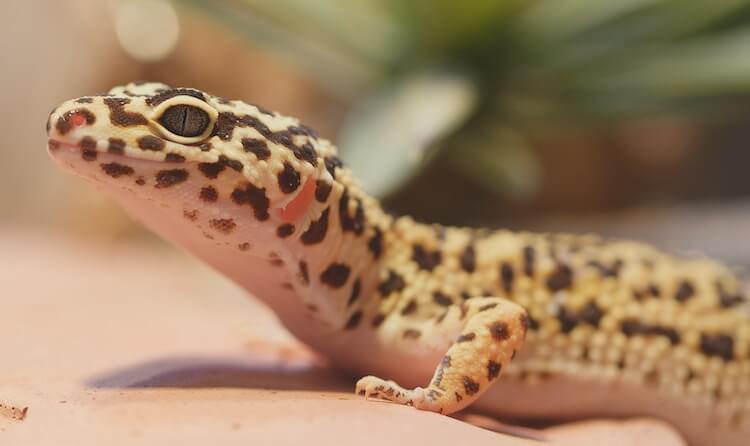
Pet Leopard Geckos can live for 10 to 20 years. Male geckos have a slightly longer lifespan and on rare occasions can live for longer than 20 years. Females need to put lots of energy into reproduction. Because of this they have shorter lifespans of 10 to 15 years.
Husbandry and diet are also determining factors of a leopard gecko’s lifespan.
How long leopard geckos live will also depend on if they are a pet or wild species.
| Gecko | Lifespan (years) |
|---|---|
| Pet | 10 – 20 years |
| Wild | 6 – 8 years |
Leopard Geckos born in captivity have double the life expectancy of wild species.
Wild Leopard Geckos live a much harder life. They tend to have much shorter lifespans of between 6 to 8 years. In their natural habitat Leopard Geckos are preyed on by birds, snakes, lizards, scorpions and jackals.
There are also environmental factors that reduce their lifespan.
Leopard Geckos live in deserts that have extended periods of drought. During these droughts it is more difficult for them to find food and water. Though these geckos have the ability to store fat in their tails, they may drop their tails when attacked by a predator.
Environmental factors, combined with more stress, parasites, and disease, mean that wild Leopard Geckos have an average lifespan of just six to eight years.
This shortened life expectancy is another reason not to buy wild-caught lizards. It is highly unlikely that it will live as long as a pet leopard gecko.
With good care, Leopard Geckos can stay healthy and active for 10 to 20 years. With the right setup, diet, and care, they are hardy lizards that are perfect for new owners.
How Old Is My Leopard Gecko?
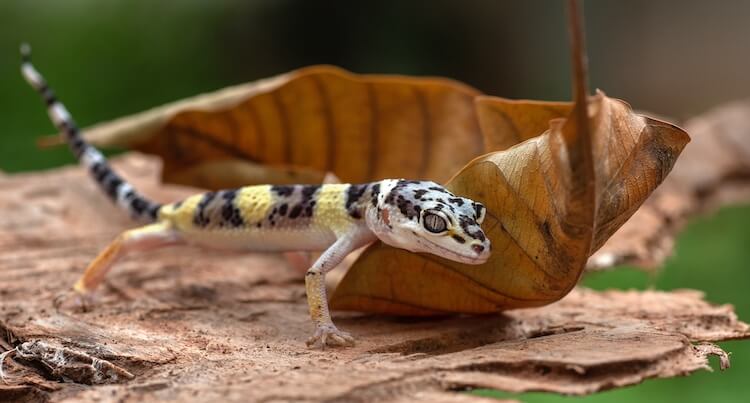
As they age Leopard Geckos go through pattern changes. This makes it easy to tell how old a gecko is.
Hatchlings typically have thick, dark bands across their backs and tails. These bands remain unbroken for the first 70 to 90 days after hatching.
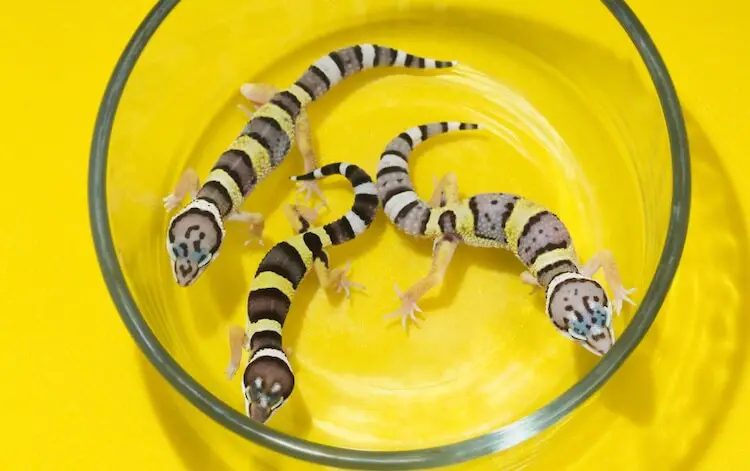
After 90 days, geckos are considered subadults. This coincides with the breakup of their juvenile stripes into blotches and spots. For 90 to 450 days after hatching, subadults will develop spots but will still have visible bands. These bands will fade over time.
Subadults will also start to develop sex characteristics around 45 to 50 weeks old.
Adult Leopard Geckos settle into their final pattern between 300 to 950 days after hatching.
Adult geckos do not have visible bands and instead have spots on a bright yellow or orange body. Different morphs of gecko create different adult patterns, with more or fewer spots and brighter colors, but never bands.
When buying or adopting a Leopard Gecko, it is important to know what stage of life it is in.
Their age determines both what you feed a Leopard Gecko and their behavior.
Juveniles and subadults are greedy eaters. Some have been known to eat several times a day to help fuel their rapid growth. The appetites of Leopard geckos slow as they age. Adults over one-year-old only need to eat every other day.
Subadults are also more flighty and faster than adults, though their activity levels are about the same.
Once they reach adulthood, Leopard Geckos have roughly the same levels of activity and appetite for the rest of their life. Compared to mammals, the aging process in reptiles is very slow. Your Leopard Gecko will continue to act healthy and normal right up until the last year of its life.
Do Leopard Geckos Die Easily?
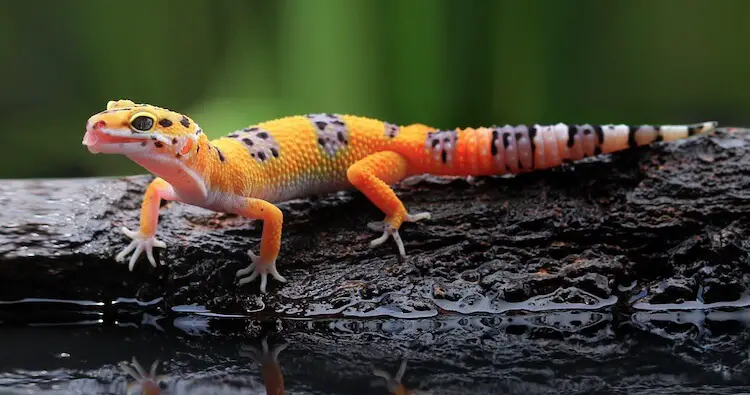
Leopard Geckos are healthy lizards. They do not die easily and are actually considered a hardy species.
Unlike some exotic pets, these lizards are forgiving of beginner mistakes. They are also resistant to many diseases, and heal quickly from injuries.
While hardy compared to most lizards, this species is still an exotic lizard. They are not completely immune to poor health. You should make sure that you are providing your lizard with the best nutrition, enclosure, and environment.
Here are a few key mistakes that can unintentionally shorten your Leopard Gecko’s lifespan:
- Not Providing A Humid Hide
Leopard Geckos need a hide with around 60% humidity to shed. Low humidity results in a skin condition called dysecdysis. This retained skin constricts and damages a gecko’s toes and tail. - It Is Too Cold
A Leopard Gecko’s enclosure should have a gradient from 75 to 94°F. Lower temperatures can cause constipation or respiratory problems. - Feeding The Wrong Diet
They should not be fed any fruits or vegetables. However, their insects should have been gut-loaded. Feed high quality prey like black soldier fly larvae, crickets, and mealworms. Avoid items like waxworms or wild insects. - High Stress Environment
Leopard geckos kept in bright or noisy conditions, without enough places to hide, are prone to stress. Chronic stress can cause numerous health problems such as hyperparathyroidism.
Overall, this species is easy to care for and rarely has health problems.
They have simple husbandry needs and a long lifespan of between 10 to 20 years. All of these factors contribute to their popularity with new and experienced reptile keepers.
How To Keep Them Healthy
Leopard Geckos are easy to care for. With just a few simple tips it is easy to keep them healthy. You may also increase your Leopard Gecko’s lifespan too.
A keeper should understand how to feed them, signs of stress and how to setup their enclosure properly.
Stress
Reducing stress is one of the best ways to increase your leopard gecko’s lifespan.
These lizards should be housed in a calm, quiet room with a regular day/night cycle to simulate natural daylight. Lighting is very important to Leopard Geckos.
You should also be very careful when handling them.
Do not be rough with your gecko and make sure to support its tail. Signs of stress during handling include:
- Raising and twisting their tail.
- Squeaking.
- Hissing.
- Biting.
Diet
Leopard Geckos need a 100% insect-based diet to be healthy.
They should not be fed any fruits or vegetables.
These lizards love crickets, mealworms, dubia roaches, black soldier fly larvae. They can also be fed an occasional treat such as hornworms. Avoid feeding pinkie mice unless it is to laying females.
Feeding a variety of food and gut-loading prey will provide them with the best nutrition. Vitamin supplements, including calcium and multivitamins, are also essential for your Leopard Gecko’s health.
Disease
Reptiles rarely show signs of disease. If they do, it will only be a very subtle sign.
It is important to know your Leopard Gecko’s personality and behaviors. That way, you will be able to tell if they are not acting normally.
Signs of disease in geckos include:
- Not Eating.
- Thin Tail.
- Breathing From an Open Mouth.
Taking a Leopard Gecko for an annual checkup is a great idea, even if it seems healthy. This will help to identify any illnesses early. You will also gain more knowledge about caring for your Leo.
Morph
Some Gecko morphs can be more sensitive to bright lights and UV radiation than others.
Albino Leopards are more sensitive to light due to the reduced melanin in their eyes. You should use a dimmer switch or a low-output bulb to keep the lights at a comfortable level for any albino morph.
Habitat
Adults need at least a 20-gallon-long terrarium. But, a 50-gallon tank is better.
Their tank must maintain a consistent temperature, with a hot side of 89 to 94°F and a cool side of 75 to 80°F. Their tank should also have lots of hiding spaces to help them feel secure and reduce stress.
Finally, use a substrate like reptile carpet or paper towels. Avoid any substrate that is likely to cause impaction.
Summary
A pet Leopard Gecko will live for between 10 to 20 years. This lifespan depends on their gender, diet and care. Most males will live for between 15 to 20 years provided they are fed a good diet and given routine husbandry.
Females do not live as long as males. This is because of the energy they use to produce and lay eggs. Females normally live for between 10 and 15 years. However, pet females will still live longer than any wild Leopard Gecko.
A wild Leopard Gecko’s lifespan is half as long as their pet siblings. Environmental stress, disease, and predation mean they live for just 6 to 8 years in the wild.
Luckily, these geckos are easy to care for and can live long lives without much effort. How old is your Leo? Share a comment below and let us know.

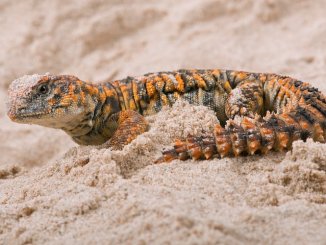
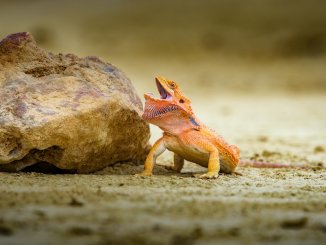
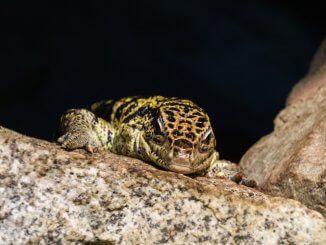

We have a female Leopard Gecko that is over 30 years old. Feeling very fortunate that our gecko has lived so long and appears to be doing very well. Still hunting down Med-Large crickets dusted with vitamin powder.
I have a female leopard geko who is 21 years old and still going strong.
Surely females live longer than that…
Laying eggs is literally what they’re built for. This makes me upset that two of my three geckos are female…
My male is at least 27 (not sure how old he was when I got him, maybe almost 1) but sadly has gone blind. Vet recommended hand feeding baby food with a syringe. I’m hoping to find another solution but since eating only 1 superworm 5-6 weeks ago but somehow still with a healthy look, I’ll heed his advice.
whaT kind of baby food. My 22 year old gecko is also blind and won’t open it’s eyes. Thanks!
Very small insects such as larvae, or mashed, larger insects in smaller doses.
I want to add that issues with eyesight might indeed be simply age-related, but they could also be caused by a oblique or horizontal source of UVB radiation (as opposed to vertical) or even inadequate UVB bulbs which emit wavelengths shorter than 290nm. Check your product.
I’ve had my Gecko since 2005.. given to me by a co worker whose Kid didn’t pay attention to it, and had gotten it from another Kid. I have no idea how old she really is. She’s not a fast as she used to be, and I now hand feed her large crickets so I can tell how much she’s eating. She still sheds about every 6 weeks, so I think she’s still going strong!